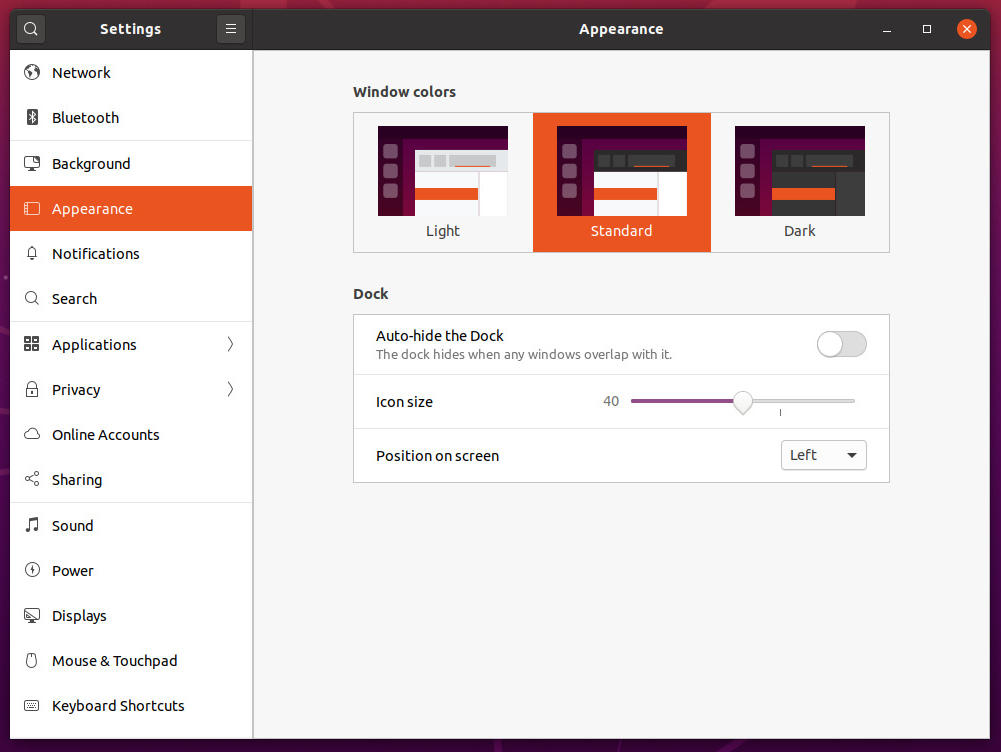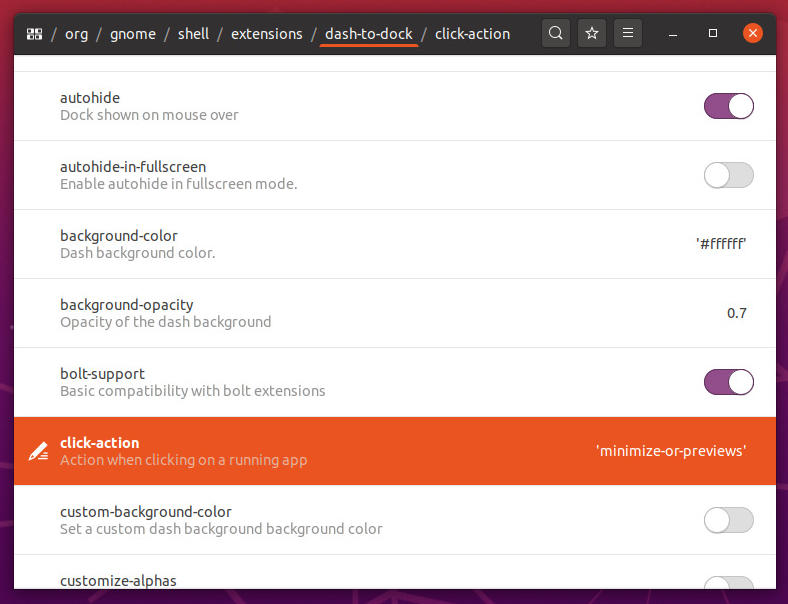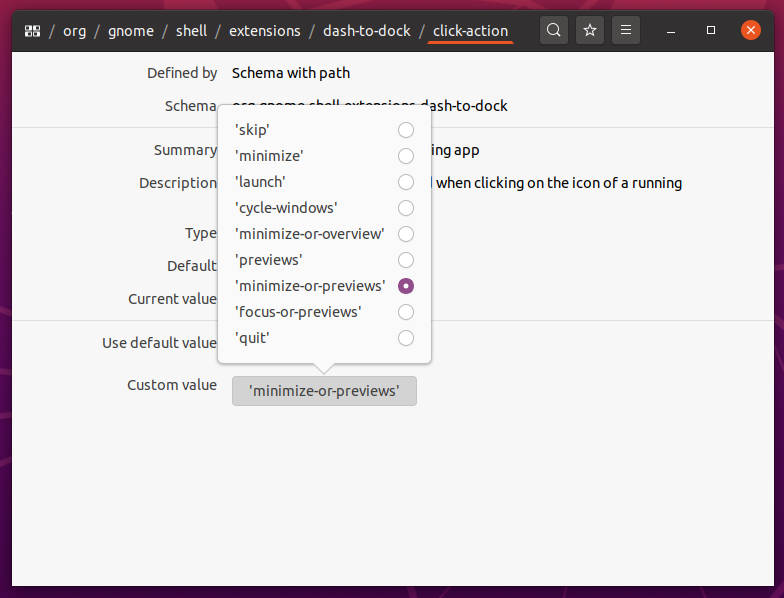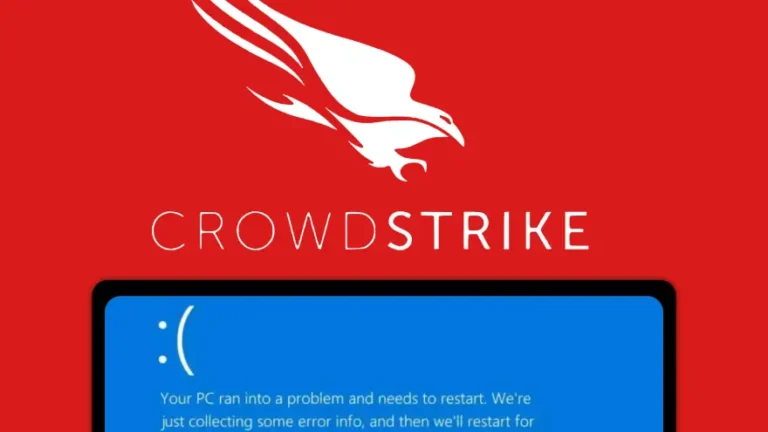I made a video recently about customizing the Ubuntu Dock with dconf-editor. This companion article covers the same topics so feel free to read on or watch the video (or both!).
The Ubuntu Dock
Ubuntu uses the GNOME 3 desktop environment. They include a number of extensions to customize the layout and functionality. In many ways, at least visually, it resembles their previous Unity desktop. One of these extensions is the Ubuntu Dock which, unlike default GNOME, is always shown along the left edge of the screen.

The settings panel does have a few options that allow you to customize the dock. These are Auto-hide the dock, the icon size, and the position on the screen. I’m sure these are the most commonly changed options for most people so it makes sense that they are easy accessible from settings.

Customizing the Dock
But what if you want to change something else like what happens when you click an icon? The Ubuntu Dock is based on the Dash to Dock GNOME extension which is very customizable. It includes its own settings panel to configure the many options it provides. These settings are available in Ubuntu as well however not in a convenient UI like Dash to Dock. Fortunately, the settings are available via dconf-editor.
dconf-editor
If it isn’t currently install (it isn’t by default) then simple run sudo apt install dconf-editor from a terminal to do so. A quick word on dconf-editor. You’ll notice a warning when you launch it claiming you can break things if you aren’t careful. This is certainly true so tread lightly. That said, I haven’t managed to break anything by changing the dock settings but it’s possible I’m not trying hard enough.
Launch dconf-editor and navigate to /org/gnome/shell/extensions/dash-to-dock where you will see many different options to choose from. I’ll cover one that I change as an example.

Change Click Action
I mentioned it earlier but I expect that when I click an icon for an application in the dock that it acts like a toggle. If the window is minimized, it should restore. If it is showing, it should minimize. Easy enough to change. If you choose the click-action setting, you see a new screen with the options for that specific setting. I like the minimize-or-previews option myself but you can see below that there are many to choose from. Click the Use default value toggle and then click the Custom value box to see the available choices. Choose one and then click Apply at the bottom right. Test it out and see if it does what you’d like or try another to find the one that suits you best.

Changing Other Settings
As you can see, there are many other options available. Not all of them are self explanatory but most are easy enough to understand. Not all of the settings have a dedicated page like click actions does. Some are simple toggles. Try out some other options to see how you can customize the dock.
Why Not Use Dash to Dock?
It’s a fair question. If you’d like to have the full Dash to Dock UI you certainly can. You’d just uninstall the Ubuntu Dock and add the Dash to Dock extension. One reason I don’t do that are that I like having the simple settings in the GNOME Settings panel and these won’t work with the Dash to Dock extension. The other is I really only change a few settings so it’s easier to use dconf-editor rather than removing Ubuntu Dock and installing and configuring Dash to Dock to look essentially the same (panel mode, etc). If you find that you want to make larger changes, then going through that process is probably worth your time.









Be the first to comment at forum.tuxdigital.com